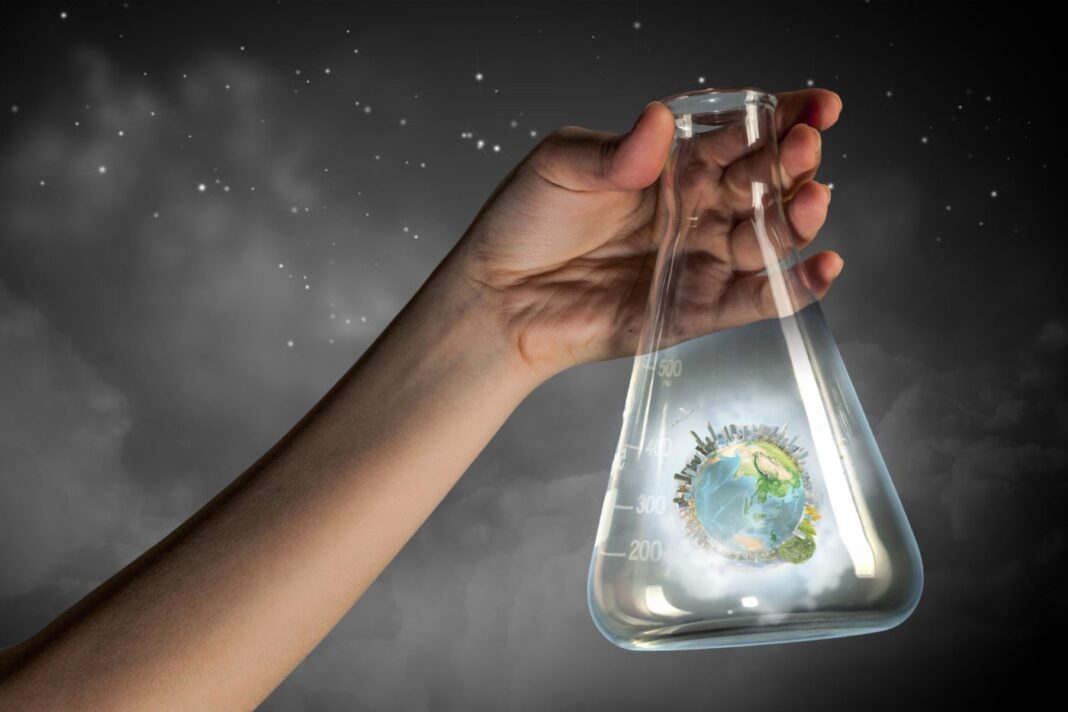When U.S. life sciences clusters are discussed, the top two—the Boston/Cambridge cluster and the San Francisco Bay Area cluster—usually dominate the conversation. Yet many of the nation’s other clusters also stand out as centers for life sciences activity.
“Boston, San Francisco, and San Diego are always going to be really important to the overall drug discovery and development model. [But] other regions … are going to … play an important role as well. I think Houston is going to be one of those,” observes Ann Tanabe, CEO of BioHouston, which promotes its namesake region as a vigorous global competitor in life science and biotechnology commercialization.
Houston’s life sciences ecosystem is best known for its concentration of research institutions, including Baylor College of Medicine, Houston Methodist, the University of Texas Health Science Center at Houston, and the University of Texas MD Anderson Cancer Center.
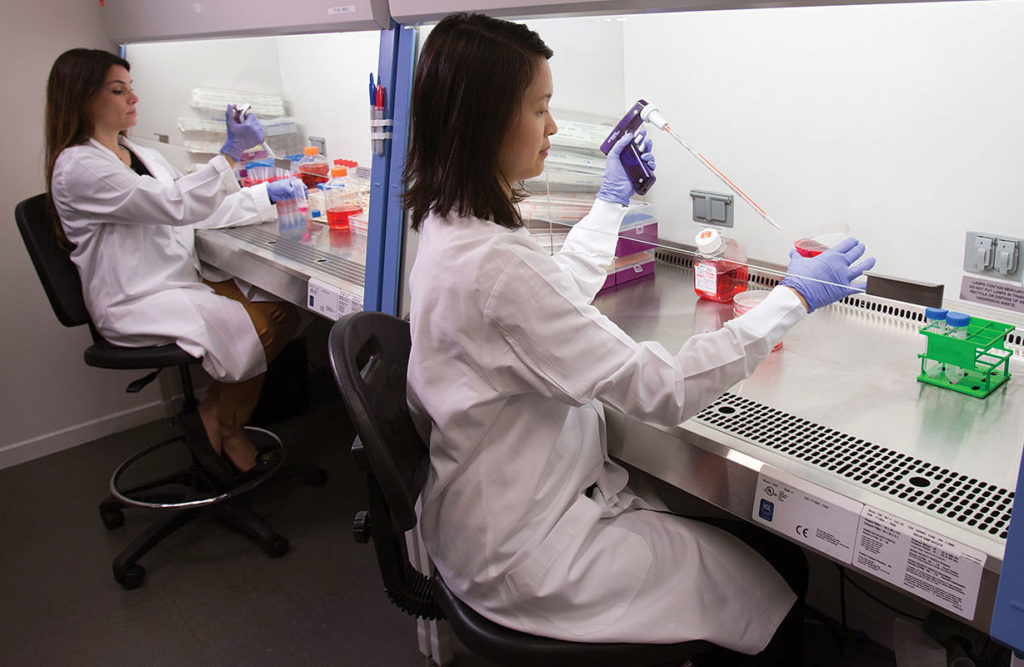
MD Anderson on April 15 completed its $15 million acquisition of Bellicum Pharmaceuticals’ 60,000-square-foot Houston facility, including manufacturing, office, and laboratory space, in a cost-cutting move for the cancer cellular immunotherapy developer. MD Anderson will operate the Houston facility for its own internal programs and for manufacturing Bellicum’s GoCAR and other cell therapy products, supplying clinical trials and potentially sustaining early commercial activity.
Last year, MD Anderson signaled its intent to actively translate basic research into new biologic drugs. The institution appointed Jason Bock, PhD, vice president and head of biologics product development.
Although Houston is best known for world-famous institutions such as MD Anderson and Baylor College of Medicine, Tanabe says, the region is also home to a growing community of companies focused on developing or manufacturing cell and gene therapies.
Catalent expanded to Houston in February when it completed its acquisition of MaSTher-Cell, a Gosselies, Belgium-based contract development and manufacturing organization focused on cell and gene therapy, from Orgenesis, which received proceeds of approximately $127 million from the $315 million transaction. The deal brought Catalent a 32,000-square-foot U.S. facility in Houston, set to focus on development-scale projects when it opens upon completion of validation activities.
Lonza Group produces such treatments in what it calls the world’s largest dedicated cell-and-gene-therapy facility in the Houston suburb of Pearland, TX. Opened in 2018, the Lonza Houston Center of Excellence is designed to address process development from concept; to preclinical, clinical, and commercialization work; to patient dosing. Last October, Lonza agreed that the Houston facility would manufacture Prevail Therapeutics’ pipeline of novel adeno-associated virus (AAV)-based gene therapies for patients with neurodegenerative diseases.
“They have become a focal point for selling gene therapy not just within the region here, but also to their clients and the companies that they’re working with, who are also then getting introduced to what Houston has to offer,” Tanabe adds.
One attraction Houston held for Lonza, she points out, is lower housing costs compared with many top-tier life sciences clusters. The median price of a single-family home in the Houston–The Woodlands–Sugar Land region stood at $245,700 in the fourth quarter of 2019, according to the National Association of Realtors’ Metropolitan Median Home Prices and Affordability Index.
“From a housing perspective, we have something for everybody,” Tanabe emphasizes. “If you want suburban life, we have that. If you want city life, we have that. It’s probably one of the few places in the country where if you’re building a workforce, everybody within your workforce can find housing for themselves.”
RALEIGH–DURHAM CHAPEL HILL
Research Triangle Park maintains low biomanufacturing costs
Also promoting a cost advantage over the largest clusters is the North Carolina region that encompasses Raleigh, Durham, and Chapel Hill, each of which contributes elements to Research Triangle Park (RTP). The region offers the lowest operating biomanufacturing costs of any U.S. biopharma location at $37.2 million per year, according to a recently published analysis from John Boyd, CEO of the Boyd Company, a site selection advisory company in Princeton, NJ.
RTP was established in 1959 to facilitate collaboration among the region’s universities, promote academic-industry cooperation, and create economic benefit for citizens of North Carolina. For more than a generation, the region attracted the manufacturing operations of pharma giants eager to tap into that innovation while reducing costs over Northeast locations. More recently, Raleigh–Durham–Chapel Hill/RTP has enjoyed a series of completed and announced expansions by biopharmas.
AveXis, a Novartis company, in February officially opened a $115 million manufacturing site in Durham to support production of Zolgensma® (onasemnogene abeparvovec) and other gene therapies. In January, Eli Lilly and Company announced plans to build a $474 million pharma manufacturing plant in the Durham County portion of RTP, creating 462 new jobs.
Last year, bluebird bio opened its first wholly owned manufacturing facility in Durham, where it produces lentiviral vector for the company’s investigational gene and cell therapies, while Pfizer announced a $500 million facility expansion in Sanford, NC, projected to add 300 jobs to the site’s 650 employees.
Raleigh–Durham–Chapel Hill/RTP accounts for over 60% (40,000) of North Carolina’s more than 66,000 life sciences employees, and over 70% (525) of the state’s 735 life sciences companies, says Jim Shamp, a spokesperson for the state-funded North Carolina Biotechnology Center, created in 1984 to advance the industry statewide and wean the state’s economy from the declining tobacco, textiles, and furniture sectors.
A Biotech Center grant in 1993 enabled the recruitment to the University of North Carolina at Chapel Hill of R. Jude Samulski, PhD, who led the university’s Gene Therapy Center for 25 years and still heads a research laboratory there. He established global leadership in commercializing the use of the AAV as a vector in delivering gene therapy as a co-founder of Asklepios BioPharmaceutical (AskBio). Samulski was also scientific founder of an AskBio spinout, Bamboo Therapeutics of Chapel Hill, and served as its chief scientific officer and executive chairman until it was acquired by Pfizer in 2016 for $645 million.
SAN DIEGO
Generations of serial entrepreneurs
The presence of researchers capable of launching and growing successful businesses has made the San Diego region among longtime leaders in life sciences, stretching back to the creation of the region’s first biotech, La Jolla-based Hybritech, in 1978 by co-founders Ivor Royston, MD, and Howard C. Birndorf.
“I think sometimes people don’t realize that when companies like Genentech were being formed [in San Francisco], and companies like Biogen were being formed in the Boston area, that Hybritech was being formed here,” says Joseph Panetta, president and CEO of Biocom, a San Diego-based group promoting life sciences activity across California.
“We’ve got that depth of experience of serial entrepreneurs, many, many of whom are still very, very much active in the industry here today,” Panetta continues. “Yet that early group of serial entrepreneurs has now handed the reins to the second or third generation of entrepreneurs following them, so that depth of serial entrepreneurial experience goes way, way back—about 40 years.”
Hybritech went public in 1981, and five years later was acquired by Eli Lilly for $480 million. Eli Lilly remains among biopharma anchors in San Diego, and in January the company partnered with Menlo Park, CA-based Strateos to complete the 11,500-square-foot Lilly Life Sciences Studio. The companies built a robotic laboratory that is designed to accelerate drug discovery within Lilly’s San Diego Biotechnology Center, where the pharma giant completed a $90 million expansion in 2017.
Another biopharma giant in San Diego is Takeda Pharmaceutical, which last year opened a 165,000-square-foot Global Research Center where 250 employees apply specialized drug discovery technologies and advance discovery research in gastroenterology and neuroscience.
“We’ve got the geographic density, with 90% of our biotech being located within a radius of about five miles or so from the Sorrento Mesa/Sorrento Valley area stretching up to Del Mar and out to La Jolla, and across to the Mesa as well,” Panetta points out. “In San Diego, we’ve got a uniqueness in that our research centers and Morris Cancer Center at the University of California, San Diego, along with the private research institutes—the Salk Institute for Biological Studies, the Scripps Research Institute, Sanford Burnham Prebys Medical Discovery Institute (SBP), and the La Jolla Institute for Allergy and Immunology—are all within very, very close proximity to each other.”
The institutions, he adds, partner with each other, one example being the Sanford Consortium for Regenerative Medicine, where UCSD, La Jolla, Salk, SBP, and Scripps, pursue collaborative research. The Sanford Consortium operates from a research facility funded in part with a $43 million grant from the California Institute for Regenerative Medicine, the state’s stem cell agency on whose board Panetta serves, and a $30 million donation from philanthropist T. Denny Sanford of South Dakota, for whom the Sanford Consortium was renamed.
BIOHEALTH CAPITAL REGION
Positioned for pandemic and beyond
The Maryland/Virginia/Washington, DC BioHealth Capital Region (BHCR) has promoted, and seen, growing collaboration between its anchors in government, academia, and industry—especially in the months since COVID-19 began wreaking havoc upon the world.
The region isn’t the only one that has seen new R&D related to the virus, but it is perhaps best positioned given its anchor employers. They include staffers at the U.S. National Institutes of Health (NIH), which bases most of its 19,000 employees (including some 6000 researchers) at its Bethesda headquarters, as well as staffers at the NIH’s National Institute of Allergy and Infectious Diseases, whose director, Anthony S. Fauci, MD, has figured prominently at President Donald Trump’s Coronavirus Task Force briefings. The BHCR region’s anchors also include the U.S. Food and Drug Administration (FDA), Johns Hopkins University (the top recipient of NIH grant funding last year according to GEN), and the Centers for Medicare and Medicaid Services.
“I think people around the world are starting to recognize there are distinct advantages to having all of those resources clustered within the BHCR,” says Richard Bendis, president and CEO of BioHealth Innovation. “People are recognizing that we are one of the most important regions in the in the world, based on this pandemic.”
While COVID-19 has generated significant activity among the region’s companies and institutions, the BHCR has seen several companies expand in specialties beyond the virus. London-based Autolus Therapeutics, a developer of chimeric antigen receptor (CAR) T-cell therapies for cancer, last year inked a long-term lease with Alexandria Real Estate Equities for construction and development of an approximately 85,000-square-foot build-to-suit office/manufacturing facility at the Shady Grove Life Sciences Center in Rockville, MD.
And in March, Aurinia Pharmaceuticals, a Victoria, BC-based developer preparing for a 2021 launch of voclosporin, a drug for treating lupus nephritis, established a U.S. commercial center of operations in Rockville, MD. Aurinia president and CEO Peter S. Greenleaf has more than two decades of experience leading pharmaceutical and biotech firms, from Cerecor (a pediatric orphan and rare disease drug developer) to Sucampo Pharmaceuticals (a company focused on gastroenterology, ophthalmology, and oncology-related disorders), which he led through its $1.2 billion acquisition by Mallinckrodt Pharmaceuticals.
One of the things that companies consider before locating within a region is whether it has serial entrepreneurs that can build growing biohealth companies, Bendis emphasizes. In such regions, entrepreneurs don’t have to be imported.
MINNESOTA
Medical Alley’s expansive vision
Also benefiting from the presence of top-tier companies and institutions is Minnesota, where the Medical Alley Association is promoting an expansive vision of the Gopher State as a global epicenter of innovation and care.
“The unique characteristic of Medical Alley is the unparalleled presence of global health leaders who continually collaborate to drive the transformation of healthcare,” declares Shaye Mandle, president and CEO of Medical Alley.
One global health leader, the Mayo Clinic in Rochester, signaled its intent to pursue global leadership in digital health in December by appointing John Halamka, MD, as president of the Mayo Clinic Platform, a strategic initiative aimed at improving healthcare through insights and knowledge derived from clinical data.
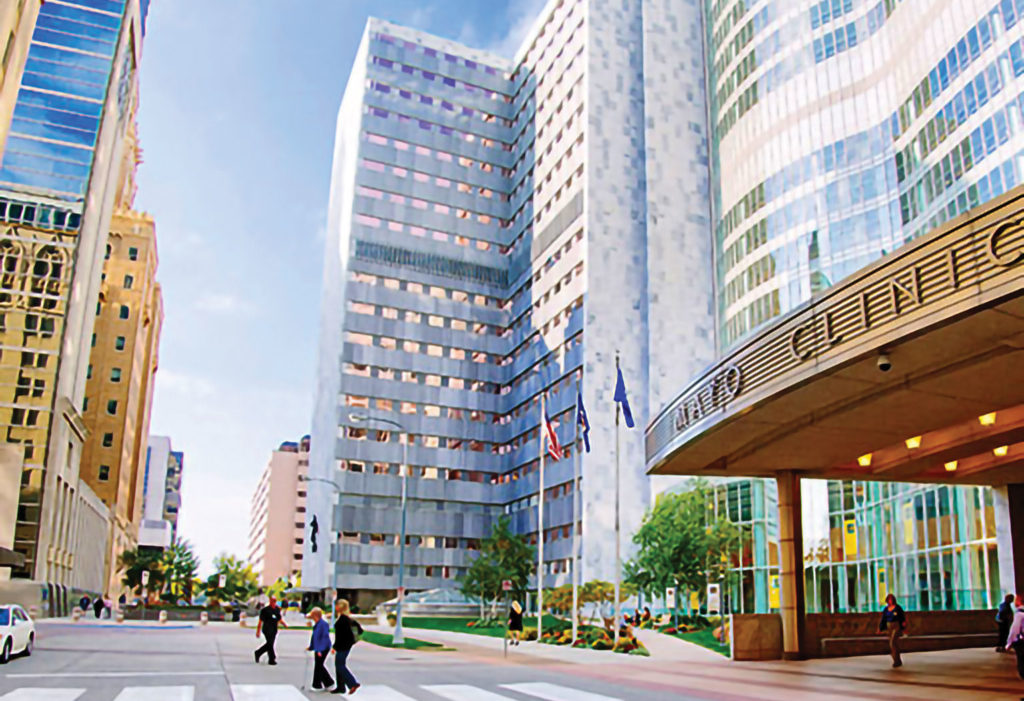
St. Paul-headquartered 3M is active in areas ranging from biopharmaceutical purification to drug delivery systems, in addition to medical devices and healthcare information systems. Richfield-based Best Buy is counting on digital health services and analytics for future growth, while UnitedHealthcare, the largest payer as defined by total covered lives, is headquartered in Minnetonka.
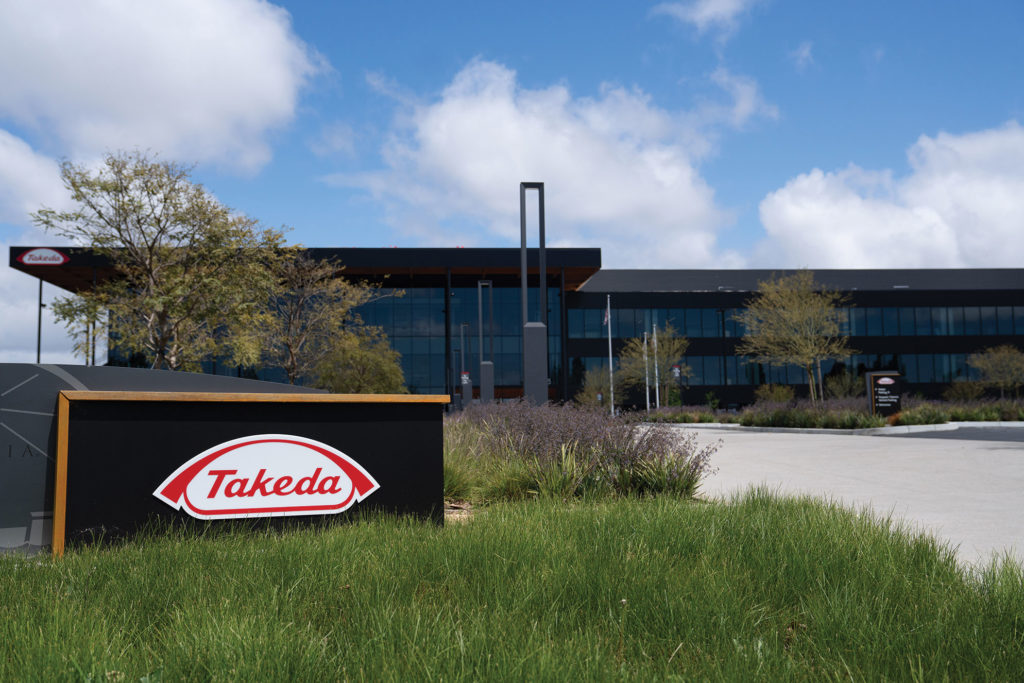
However, much more can be said about Minnesota’s biopharma-oriented growth. Takeda last month wrapped up FDA preapproval inspection at its biologics plant in Brooklyn Park, MN, acquired from Baxalta in 2016. Minneapolis-based Bio-Techne said in October it will invest between $40 million and $50 million to expand its GMP-grade protein production capacity into St. Paul, where the company bought the former Molex copper plant at 22 Empire Drive for approximately $3 million.
Bio-Techne plans to fund a new facility dedicated to supporting the large-scale production of GMP-grade materials, including Escherichia coli-derived recombinant proteins. In January, Bio-Techne joined Fresenius Kabi and Wilson Wolf to launch a joint venture aimed at providing dedicated support to researchers and biopharmaceutical companies in cell and gene therapy.
ATLANTA
CDC presence, biopharma expansions
The COVID-19 global pandemic brought global attention to the U.S. Centers for Disease Control and Prevention (CDC), reinforcing the agency’s standing as the nation’s leading public health institute—as well as its central role in Metro Atlanta’s life sciences community.
“The prestigious institution helped Atlanta earn its title, ‘Public Health Capital of the World,’ which is bolstered by the presence of many other global health organizations including the Task Force for Global Health, the Carter Center, the Cooperative for Assistance and Relief Everywhere (CARE), and the American Cancer Society,” says Maria Thacker-Goethe, MPH, president & CEO of Georgia Bio, a statewide life sciences industry association. (She is also executive director of Georgia Bio’s Georgia BioEd Institute division, a 501(c)(3) nonprofit created to strengthen Georgia’s life sciences workforce pipeline.)
According to “The Life Science Industry in Georgia: Economic Trends and Impact,” a report released last year by Georgia Bio, staffing levels maintained by the state’s employers in 2017 were as follows: the CDC, 9000; university life sciences departments, 8600; biopharma companies, 8400.
“Behind the healthcare innovations happening in Atlanta is a robust research community whose discoveries fuel those innovations,” adds Thacker-Goethe, who is also CEO of the Center for Global Health Innovation and executive director of the Georgia Global Health Alliance.
Metro Atlanta’s life sciences industry also includes a growing number of biopharma companies. Takeda operates a plasma fractionation manufacturing site in suburban Covington, which employs more than 1000 full-time and contract employees. The Takeda plant received an honorable mention in the International Society of Pharmaceutical Engineers (ISPE) 2019 Facility of the Year Awards.
Also last year, Governor Brian P. Kemp joined Boehringer Ingelheim Animal Health USA to announce $120 million in company investment in Georgia—a new North American headquarters in Duluth with 75 jobs; an expanded manufacturing site in Gainesville where the company plans to base more than 50 jobs; and an expanded manufacturing and R&D facility in Athens, with more than 100 jobs. In Athens, Boehringer Ingelheim Animal Health USA added a filling line and two freeze dryers, doubling the amount of pet vaccines that can be produced there.
METRO DENVER
Big deals and a gene therapy arrival
Pfizer’s $11.4 billion acquisition of Boulder-based Array BioPharma last year offered the most telling example of how much biopharma and the life sciences have grown over the past decade in the nine-county northern Colorado region anchored by Denver, Boulder, and Aurora. The region’s life sciences industry grew 7.5% between 2011 and 2017, surpassing the national life sciences growth rate of 5.4%, according to the Metro Denver Economic Development Corporation.
The Array acquisition accounted for nearly all (94%) of the total $12.1 billion in financing attracted by Colorado life sciences companies during 2019; the remainder consisted of $750 million in federal and state grants, successful financing rounds, and acquisitions transfers. Two Boulder life sciences companies completed major financings last year: Clovis Oncology, which raised $175 million in nondilutive clinical trial financing from entities of TPG Sixth Street Partners, and Inscripta, which completed a $125 million Series D financing round, with proceeds set to fund commercialization of its Onyx™ Digital Genome Engineering platform. For Inscripta, the financing round brought total amount raised by the company to $259.5 million.
Last year, one of Metro Denver’s newest biotech arrivals, AveXis, acted to expand its gene therapy manufacturing capacity by purchasing AstraZeneca’s former advanced biologics therapy manufacturing campus in Longmont. AveXis paid $30 million for the Longmont site in a sale recorded April 2, according to data from the Boulder County Assessor’s Office.
Earlier this year, AstraZeneca confirmed in its annual Form 20-F Annual Report for 2019 that it had agreed to sell a second site in the region, a biologics bulk manufacturing plant in Boulder, to Bothell, WA-based contract development and manufacturing organization AGC Biologics. AGC has promised to create 280 new jobs paying an average annual wage of $96,253—a total investment of $100 million—in return for incentives from the Colorado Economic Development Commission that included $6.4 million in performance-based tax credit incentives (contingent on job growth) over eight years, and $75,000 in performance-based strategic fund cash incentives over five years.
AstraZeneca acquired the Boulder site in 2015 and the Longmont site in 2016 from Amgen, which pulled out of the region that year as part of a series of cost-cutting efforts.
SEATTLE
Tech-turbocharged research engines
Seattle is another region that lost an
Amgen facility in 2014. But in a case of “what goes around comes around,” the biotech giant is now partnering with a fast-growing Seattle-based personalized diagnostics and therapeutics developer, Adaptive Biotechnologies, to use its immune medicine platform to discover and develop antibodies against COVID-19. Adaptive Biotechnologies—which raised about $321 million in net proceeds when it went public last year—and Microsoft recently announced an expansion of a collaboration they launched nearly two years ago. This collaboration, which involves mapping population-wide adaptive immune responses to diseases, has started to incorporate data about COVID-19.

The partnership with Microsoft, based in suburban Redmond, also reflects a unique strength of Seattle’s life sciences industry—the home-grown presence of tech giants, says Leslie M. Alexandre, DrPH, president and CEO of Life Science Washington. Alexandre noted that Seattle’s South Lake Union is home to Amazon’s headquarters and a large campus for Google Cloud, while Google signed leases in January to expand in suburban Kirkland; Apple has grown its Seattle offices; Facebook has 18 offices in the region; and Salesforce expanded into Seattle’s North Lake Union when it completed its $15.7 billion acquisition of Tableau Software in August.
“Our ‘Big R’ [research] ecosystem has been turbocharged in recent years by the explosion of tech in our region,” Alexandre declares.
That research ecosystem, she continues, is led by the University of Washington, the region’s leading public university for R&D expenditures. The University of Washington is preparing to open its $230-million Population Health Initiative building later this year. The Bill and Melinda Gates Foundation funded $210 million of the cost, with $15 million coming from Washington state. The research ecosystem also includes the Fred Hutchinson Cancer Research Center, the Allen Institute, and Institute for Systems Biology—plus global health institutions such as the Bill and Melinda Gates Foundation and the Program for Appropriate Technology in Health (PATH).
“The research productivity of these organizations and many others has spawned hundreds of life sciences companies throughout the greater Puget Sound region and attracted components of others,” Alexandre notes. “The most recent crop of startups includes standouts in cancer immunotherapies, [treatments for] infectious diseases and neurodegenerative disorders, and cell and gene therapies.”
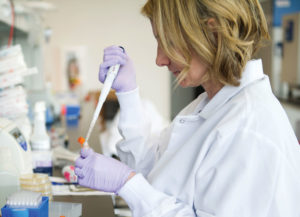
Silverback Therapeutics, a startup in Seattle, WA, is using its ImmunoTAC drug conjugate technology to develop systemically delivered, locally active therapies.
One Seattle startup, Silverback Therapeutics, announced in March that it had completed a $78.5 million investment round, with proceeds set to support development of SBT6050, a treatment candidate for HER2-expressing solid tumors. SBT6050 is set to start clinical trials this year. The company plans to advance its pipeline of immune-modulating ImmunoTAC™ drug conjugates, therapeutic candidates targeting previously inaccessible disease pathways.
A cancer immunotherapy developer that began as a Seattle startup, Juno Therapeutics, was bought by Celgene for $9 billion in 2018. In November, Bristol-Myers Squibb completed its $74 billion purchase of Celgene, growing its workforce to more than 1000 people.
A life sciences cluster has also grown in recent years in and around Chicago, where three federal laboratories, several biopharma giants, and an emerging community of startups are buttressed by a strong base of academic research institutions—including Northwestern University, the University of Chicago, and the University of Illinois. In February, Illinois Governor J.B. Pritzker and Chicago Mayor Lori Lightfoot joined the University of Illinois and the developer Related Midwest to announce plans for a research center within “The 78,” a 62-acre site. The research center will be run by the Discovery Partners Institute.
“Chicagoland is home to a very large and diverse life sciences community. Our region has expertise from bench to bedside, starting with our world-class research institutions,” says John Conrad, president and CEO of the Illinois Biotechnology Innovation Organization (iBio).
He notes that Chicagoland is also home to several leading healthcare systems that include Ann and Robert H. Lurie Children’s Hospital of Chicago, Northwestern Medicine, the University of Chicago (UChicago) Medicine, NorthShore University HealthSystem, and Rush University Medical Center.
Horizon Therapeutics plans to move its U.S. employees in the second half of this year from its Lake Forest site to a larger site, one that once served as the U.S. headquarters of Takeda Pharmaceuticals. Horizon acquired its new site, a three-building, 650,000-square-foot campus in Deerfield, through a $115-million deal in February.
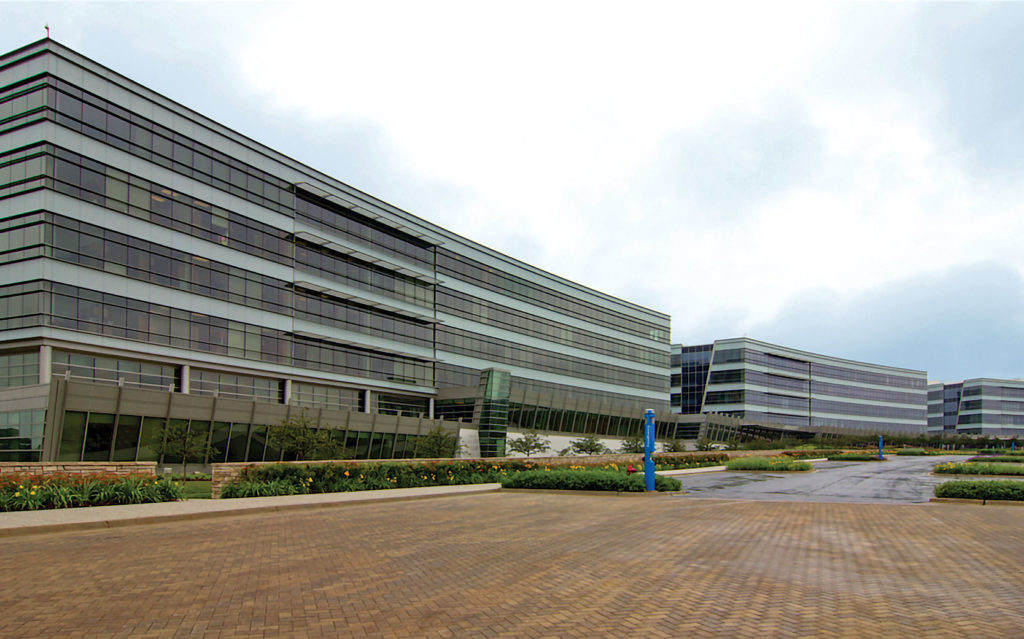
Recent years have seen the development of new facilities across Chicagoland, Conrad relates. One such facility is 8030 Lamon Avenue, an expansion in suburban Skokie of the Illinois Science + Technology Park by American Landmark Properties. Other examples include two Chicago sites. The first is Sterling Bay’s The Labs, the former Stanley Manne Children’s Research Institute building at 2430 North Halsted Street in Chicago’s Lincoln Yards neighborhood. (The Labs recently announced that Exicure had signed a lease to occupy 30,000 square feet.) The second is Trammel Crow’s 16-story, 405,000-square-foot Fulton Labs in Chicago’s Fulton Market neighborhood. (Here, Trammel Crow is partnering with life sciences entrepreneur John Flavin to launch Portal Innovations, a platform to seed-fund and accelerate life sciences, medical technology, and bioinformatics ventures.)
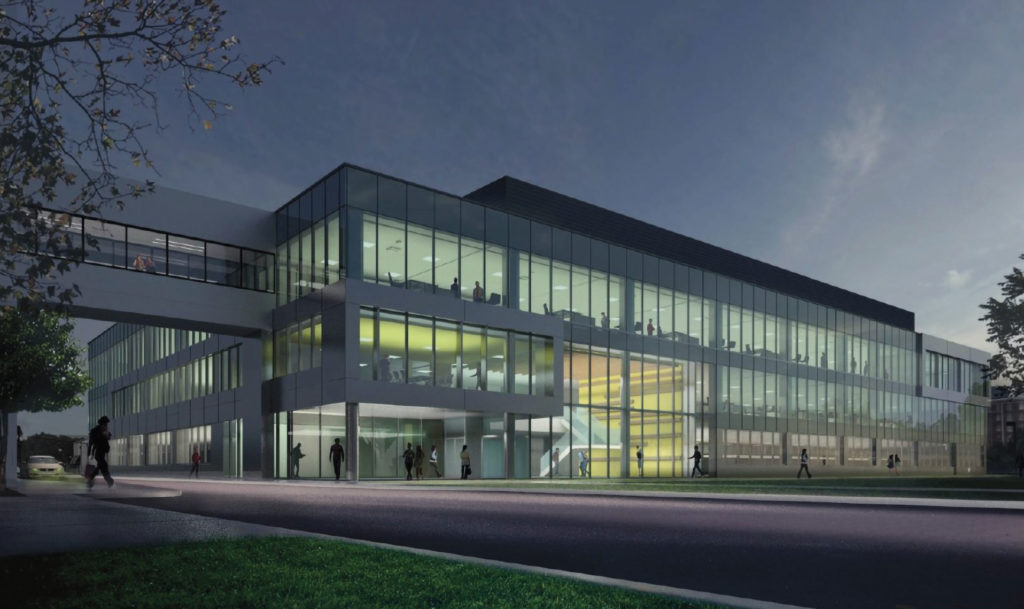
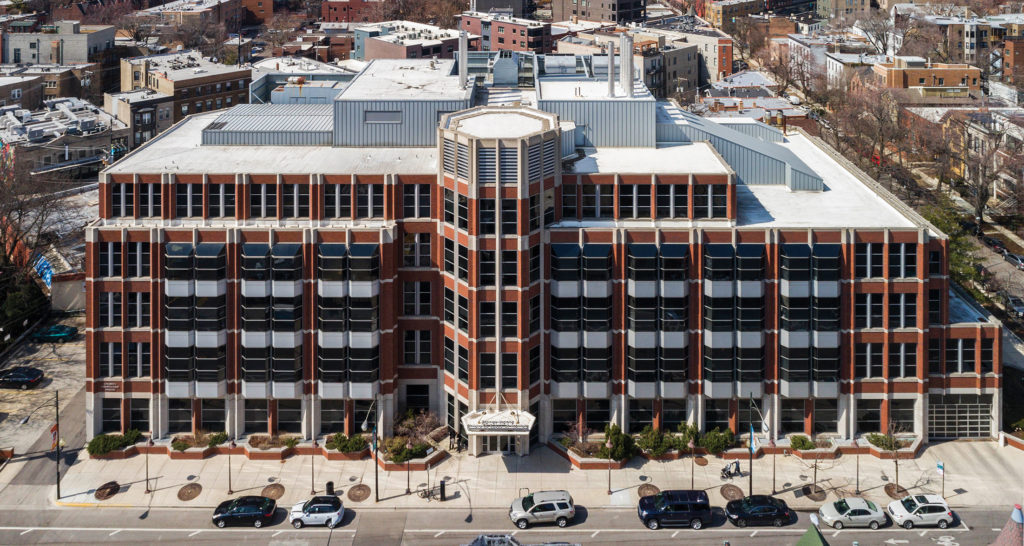
“The recent life sciences real estate boom in Chicago is the strongest indicator of the growth of our ecosystem,” Conrad insists.
NEW YORK METRO
Where progress never sleeps
Also enjoying a life sciences real estate boom is New York City, which has benefited from New York State’s $620 million Life Science Initiative. The initiative includes $100 million to expand the Excelsior Jobs Program of refundable tax credits; $100 million for a new life sciences R&D tax credit; and $320 million in state grants to support the development of wet-lab and innovation space, support operations, and investment capital for early-stage life sciences companies. The initiative also includes at least $100 million in private sector investment.
The initiative will invest $25 million over 5 1/2 years in IndieBio New York, created in January by SOSV, the world’s most active investor in both life sciences and hardware. IndieBio plans to launch its inaugural cohort in May.
Through its New York expansion, IndieBio intends to double its 30 startups funded annually with $250,000 in exchange for a “small” equity position—and will launch a therapeutics track that will fund up to $2 million per accepted startup. SOSV says that it will build a 24,000-square-foot lab and co-working space for its New York-based startups, doubling the firm’s space in the city. New York startups are also being nurtured by accelerators such as Johnson & Johnson Innovation’s JLABS and BioLabs@NYULangone, the latter of which is a partnership of BioLabs New York and NYU Langone Health.
“New York City sits directly at the heart of the Eastern U.S. life sciences corridor—which also includes Boston, Philadelphia, Maryland, and North Carolina—and is one of the world’s most concentrated locations for life sciences, technology, and healthcare,” says Nancy J. Kelley, a steering committee member of NYC Builds Bio+, which advances life sciences development in New York City by uniting the city’s real estate and life sciences communities.
The Big Apple is also the center, Kelley adds, of a regional life sciences and technology cluster that includes suburban biopharma companies and research institutions within New York’s Hudson Valley and Long Island—the largest company being Regeneron Pharmaceuticals in Tarrytown—and New Jersey’s global pharmaceutical giants.
According to the privately funded economic development agency Choose New Jersey, the Garden State is home to more than 400 biotech companies, and 13 of the top 20 biopharmaceutical companies. Last year, New Jersey Governor Phil Murphy enacted a doubling of the state tax credit for angel investors in July.
New York City’s largest private development is taking shape along Manhattan’s East River, where Alexandria Real Estate Equities plans a third building—the 550,000 rentable-square-foot North Tower—at its Alexandria Life Science Center-New York City campus in Manhattan. Alexandria also plans to redevelop Pfizer’s headquarters on East 42nd Street, with an option to either convert existing office space into office/laboratory space or build an additional 230,000 square feet of new space.
Elsewhere in Manhattan, Janus Property in January topped out the 350,000-square-foot Taystee Lab Building, once the site of a bakery in West Harlem; Larry Silverstein’s Silverstein Properties and Taconic Investment Partners have converted 619 West 54th Street into the Hudson Research Center; and Deerfield Management in April closed its $840 million Deerfield Healthcare Innovations Fund II, with plans to invest in science startups. Much of that activity will focus on startups to be based at Deerfield’s 345 Park Avenue South, which is to be converted into life sciences space under a $635-million plan announced last year.
Across the East River in Long Island City, Queens, King Street Properties and GFP Real Estate broke ground in December 2019 on Innolabs, which will convert a 160,000-square-foot class B office building into a 266,800-square-foot Class A life-sci facility; while Alexandria in 2018 bought the Bindery, a 175,000-square-foot building, for a reported $75 million, then spent $25 million in July for a site across the street.
New York City’s life sciences growth, Kelley states, is also being driven by technology giants interested in expanding their presence in digital health and wearable technologies. Google is constructing a 1 million-square-foot campus in Manhattan’s Hudson Square section; Facebook plans to open a 1.5-million-square-foot campus; and Amazon is taking over the former Lord & Taylor building on Fifth Avenue, a building the company bought for $1.15 billion after abandoning its plans for a second headquarters in Long Island City.
“New York City’s ‘Innovation Ecosystem’ for scientists and makers include biopharmaceutical and ‘big tech’ companies; healthcare, digital health, AI, and big data companies; colleges and universities; independent research institutes, incubators, accelerators; and maker spaces as well as convening places for innovators—from bio to tech to healthcare,” Kelley points out. “New York City also has the enviable position of pairing world-class academic centers with leading institutions in the fields of design, finance, food, media, technology, and philanthropy like no other geographic location.”
HOUSTON—Targeting COVID-19
Moleculin Biotech, based in Houston, TX, has joined ImQuest Biosciences to expand in vitro and in vivo testing of WP1122, a glucose decoy prodrug, after researchers at the Goethe University in Frankfurt reported that it inhibited SARS-CoV–2 replication by 100% in Caco-2 cells.
Another Houston drug developer, Pulmotect, has spent a decade working with the University of Texas MD Anderson Cancer Center and Texas A&M University to develop PUL-042, a combination of two Toll-like receptor agonist ligands that in January showed preclinical efficacy in mouse models against both SARS-associated coronavirus (SARS-CoV) and MERS-associated coronavirus (MERS-CoV). The drug was initially developed to treat cancer patients susceptible to respiratory infections.
RALEIGH–DURHAM–CHAPEL HILL/RTC—Targeting COVID-19
Grifols is partnering with BARDA, the U.S. Food and Drug Administration, and other federal public health agencies to support preclinical and clinical studies assessing if plasma from convalescent COVID-19 patients, processed into a hyperimmune globulin at its Clayton facility, can successfully treat the virus.
Durham-based BioCryst Pharmaceuticals is testing its broad-spectrum antiviral therapy galidesivir against COVID-19 in Brazil. Research Triangle Park-based Cellex on April 1 won FDA Emergency Use Authorization for the qSARS-CoV-2 IgG/IgM Rapid Test, the first COVID-19 antibody-based test to gain the designation. Also, Seqirus is providing adjuvant for experimental COVID-19 vaccines from its Holly Springs campus, where it is completing a $140 million expansion of its cell-based flu vaccine factory.
SAN DIEGO—Targeting COVID-19
Homegrown Inovio Pharmaceuticals was among developers of COVID-19 drug and vaccine candidates highlighted by CBS’ 60 Minutes for its DNA vaccine INO-4800, now under Phase I study. INO-4800 is also in a Phase I/II trial in South Korea with the International Vaccine Institute (IVI) and the Korea National Institute of Health, for which the Coalition for Epidemic Preparedness Innovations (CEPI) has granted Inovio $6.9 million.
CalciMedica is evaluating the small-molecule CRAC channel inhibitor CM4620-IE in patients with severe COVID-19 pneumonia who are at risk for progression to acute respiratory distress syndrome. The company has begun an open-label Phase II study set to enroll 60 patients.
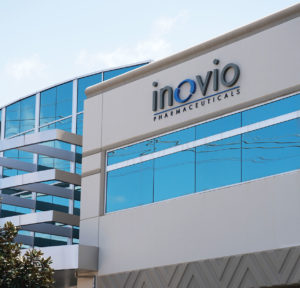
MARYLAND–VIRGINIA–WASHINGTON, DC—Targeting COVID-19
In the BioHealth Capital region, Gaithersburg, MD-based Novavax is developing COVID-19 vaccine candidate NVX-CoV2373, which the company indicated would be in a Phase I trial starting in May. The company has tapped another Gaithersburg-based company, Emergent BioSolutions, to begin GMP clinical production and arrange for large-scale manufacturing.
Separately, Emergent has received $14.5 million from the Biomedical Advanced Research and Development Authority (BARDA) to support development of its COVID-Human Immune Globulin (COVID-HIG), a human plasma-derived therapy candidate being developed to treat COVID-19 in severely affected, hospitalized, and high-risk patients.
In Vienna, VA, Cel-Sci is developing its LEAPS COVID-19 immunotherapy in partnership with the University of Georgia’s Center for Vaccines and Immunology.
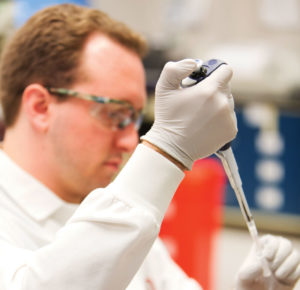
MINNESOTA—Targeting COVID-19
Two Medical Alley anchors are in separate consortia studying potential COVID-19 treatments. Rochester-based Mayo Clinic is in one consortium assessing a therapy consisting of antibodies from the blood of recovered COVID-19 patients in a clinical trial.
In another consortium, participants include Takeda Pharmaceutical, which has a manufacturing plant in Brooklyn Park, MN. This consortium is also working to develop a plasma-based treatment, an unbranded anti-SARS-CoV-2 polyclonal hyperimmune immunoglobulin therapy to treat serious complications from COVID-19.
ATLANTA—Targeting COVID-19
DRIVE (Drug Innovation Ventures at Emory), a not-for-profit biotech based in Atlanta, GA, and wholly owned by Emory University, is partnering with Miami, FL-based Ridgeback Biotherapeutics on clinical studies of EIDD-2801, an antiviral compound. Mice infected with SARS-CoV or MERS-CoV showed improved pulmonary function and reduced virus titer and body weight loss after treatment with the oral broad-spectrum prodrug, according to a study preprint.
The CDC Foundation—an independent nonprofit created to support the Centers for Disease Control and Prevention’s work—has partnered with Microsoft to seed-fund the launch of the Global Health Crisis Coordination Center (GHC3), a coalition of corporations and nonprofits formed to assist public officials with COVID-19 pandemic response.
DENVER—Targeting COVID-19
Aurora, CO-based Greffex is developing a COVID-19 vaccine candidate that it has committed to distributing free to other countries upon approval. The company aims to get its vaccine approved and available to patients by year’s end.
Boulder-based Biodesix has launched the SARS-CoV-2 Droplet Digital PCR™ (ddPCR™) test and is partnering with Bio-Rad Laboratories to bring a COVID-19 Droplet Digital PCR (ddPCR) test through FDA approval. Also, Englewood-based Aytu BioScience says the specificity of its IgG/IgM Rapid Test was validated in a study published in Infection Ecology & Epidemiology. The test showed an overall specificity of 100% and 99.2% for IgM and IgG, respectively.
SEATTLE—Targeting COVID-19
Companies and institutions based in Seattle, WA, are busy working to overcome COVID-19, many of them in collaboration with each other or with partners based elsewhere, says Leslie M Alexandre, DrPH, president and CEO of Life Science Washington. For example, Adaptive Biotechnologies is part of an antibody collaboration with Amgen, and a human immune system mapping collaboration with Microsoft. Also, researchers at the Kaiser Permanente Washington Research Institute in Seattle in March became the nation’s first research group to evaluate mRNA-1273, the mRNA vaccine being developed by Moderna, in a Phase I trial (NCT04283461) in 45 healthy adults.
Bothell-based contract manufacturing organization AGC Biologics is manufacturing a therapeutic candidate for COVID-19 discovered and developed by Vancouver, WA-based CytoDyn. And another Bothell-based company, FUJIFILM SonoSite, is in the anti-COVID-19 fight. The company has scaled up production of its handheld point-of-care ultrasound (POCUS) solutions for diagnosis of COVID-19-infected lungs.
CHICAGOLAND—Targeting COVID-19
Researchers at Argonne National Laboratory in Lemont, IL, and Northwestern University Feinberg School of Medicine have mapped the structure of nsp10/nsp16, a two-protein complex and potential target of SARS-CoV-2 shown to modify the genetic material of the virus to make it look more like host human cell RNA.
Abbott, headquartered in Chicago, IL, won national attention—including from President Donald Trump—after gaining FDA Emergency Use Authorization of its ID NOW™ COVID-19 test, which is designed to evaluate samples for nucleic acid from SARS-CoV-2, and to deliver positive results in 5 minutes and negative results in 13 minutes.
NEW YORK—Targeting COVID-19
Pfizer, which is headquartered in Manhattan, has joined with German-based BioNTech to develop BNT162, a potential first-in-class mRNA vaccine designed to induce immunity and prevent COVID-19 infection, through an up-to-$748 million partnership. At the end of April, the companies announced that they had started a clinical trial.
Another New York City-based drug developer, Tonix Pharmaceuticals, has teamed up with Southern Research Institute to develop TNX-1800, a live modified horsepox virus vaccine, with preliminary animal data expected in Q3 2020. North of New York City, Tarrytown-based Regeneron Pharmaceuticals is pursuing an antibody “cocktail” combination therapy and partnering with Sanofi to assess Kevzara® (sarilumab) in a Phase II/III trial (NCT04315298).

